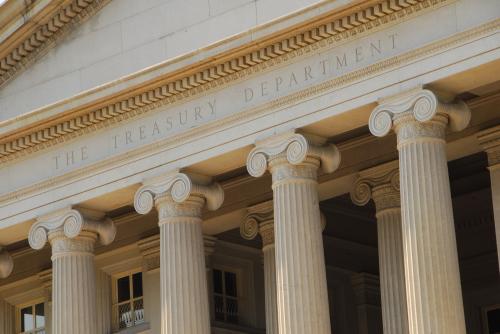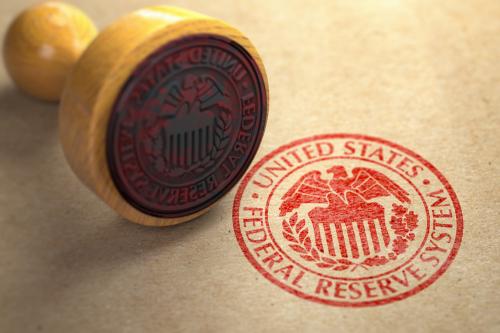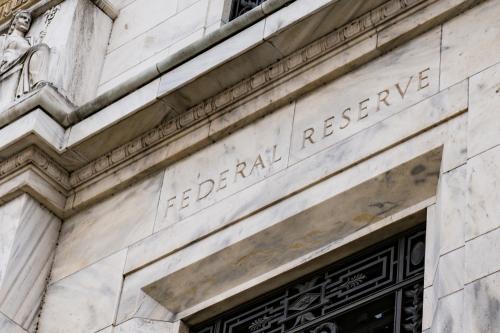Treasury Secretary Steven Mnuchin, in a November 19 letter to Federal Reserve Chair Jerome Powell, reduced to nearly nothing the Treasury’s commitments to many of the emergency lending facilities that the Fed created in response to the COVID-19 pandemic, including the ones targeted at mid-sized businesses and state and local governments.
This has led to three questions: Did the law require this, as Mnuchin suggested in his letter? What can the Fed do now? And what can the Biden administration do once the President-elect is inaugurated?
Was this required by law?
No. Mnuchin’s reading of the statute is based on his interpretation of congressional intent rather than a statutory requirement. The relevant law is § 4029 of the CARES Act, which states that “the authority provided under this subtitle to make new loans, loan guarantees, or other investments shall terminate” on December 31, 2020. But the “authority provided” by the CARES Act is for the Treasury, not the Fed. The Fed’s authority to create these facilities comes from the Federal Reserve Act, not from the CARES Act. These “new loans, loan guarantees, or other investments” are those made by the Treasury to various counterparties, including especially the Federal Reserve. (If you are confused by why one part of the government is lending money to another part of the government, welcome to the novelty that is the CARES Act.)
This means that Mnuchin is right that the Treasury cannot make new commitments after December 31, 2020. That has nothing to do with the Fed’s emergency lending authority, though. The Fed has committed to keeping these facilities open, something that even Mnuchin acknowledges (as he is leaving some Treasury money in place). In other words, the law did not make Mnuchin withdraw these funds; that was a decision for which he is solely responsible.
What can the Fed do now?
Watch and wait, for now. Powell has said that the Fed will return the money to the Treasury. These facilities are still open, though, and perhaps these substantially weakened facilities will not be necessary. After all, the take-up in 2020 so far has been underwhelming. Perhaps markets, firms, individuals, and families will continue to muddle through without the need for the kinds of experimentation we saw from the Fed earlier this year.
“Fortunately, the Fed has plenty of more ammunition, creativity, and bandwidth to adapt should the need present it, without the participation of the Treasury.”
That’s a big bet to take. Fortunately, the Fed has plenty of more ammunition, creativity, and bandwidth to adapt should the need present it, without the participation of the Treasury. In particular, there are two avenues it could take. First, it can change its legal and technical theory of its emergency lending such that the Treasury’s money is not necessary. There is no requirement in the statute that the Treasury provide these funds to the Fed in the first place. The Federal Reserve Act does require the Fed to “establish, by regulation, . . . the policies and procedures governing emergency lending” that are “designed to ensure that . . . the security for emergency loans is sufficient to protect taxpayers from losses.” The emphasis is added because the law is about what the Fed does. It proposed changes in 2013 and adopted revised changes in 2015. That part is done.
Practically, though, the Fed could look more broadly at the theory of emergency lending than it has to date. Rather than depending on Treasury funds—with all the limitations that those introduce, including such instability as we are seeing now—it can look at its entire balance sheet and all of its lending facilities to engage in this lending on its own. Central bankers are fond of saying that they are in the business of “lending, not spending.” The general proposition is true enough, but more creative lending—including riskier lending that is balanced against its other emergency monetary measures—will be more than enough to protect taxpayers from losses.
Second, the Fed could design new lending or asset-purchasing facilities using authority in the Federal Reserve Act that does not involve the Treasury at all. These include Section 14, the part of the Federal Reserve Act governing open-market operations. The Fed has relied on this section for some of its other emergency programs, such as international swap lines with foreign central banks and so-called quantitative easing. It also has the mostly untapped potential of the “discount window,” the mechanism for direct lending to banks. It created a new discount window facility after 2008 to support banks, but could also use that same process to support banks’ customers—what in the United Kingdom they call “funding for lending.” (The Bank of England lends to banks at below-market rates; both the quantity and the price of these funds are linked to the amount of lending that banks undertake.)
At the minimum, the Fed—or perhaps Fed Chair Powell—should make a statement that we are nowhere near the end of the Fed’s capacity to support the economy and financial system in times of emergency. The legal structures described above may pose some technical or political obstacles, but not legal ones. If things start to fall apart, the Fed will not lack defenses.
What should Yellen do?
The press reports that President-elect Biden will nominate Janet Yellen, the former Fed chair, to be Secretary of the Treasury. She will, undoubtedly, handle the job very differently than her predecessor, not least in the way she will partner with the Fed in emergency lending.
This will happen in two ways.
First, the Treasury must by law give “prior approval” for any new facility that the Fed creates under its emergency lending authority. Given that the Fed has already thrown the kitchen sink at the problems of the COVID financial crisis, this seems unnecessary. But if we have learned one thing from 2020, it is that we should be prepared for anything—so if new facilities become necessary after January 2021, the Yellen Treasury will have a major role to play in shaping them.
“[T]here is a strong legal argument that [Yellen] can, on January 20, move the dial back to November 19 and rescind Mnuchin’s rescission.”
Second, there is a strong legal argument that she can, on January 20, move the dial back to November 19 and rescind Mnuchin’s rescission. This would restore the Treasury loans under the original Fed-Treasury agreement, with money explicitly appropriated by the Congress in the CARES Act for that purpose. The question is whether such a move would constitute a prohibited “new loan” or would in fact simply be a restoration of the legally valid arrangement created earlier this year. The political stakes for this kind of move are serious, since many Republicans might oppose it, but it is an option worth considering carefully.
Regardless, Treasury will play an important role in emergency lending, no matter where it intervenes. It is no threat to Fed independence for the Secretary of the Treasury to insist that emergency lending reflect important political constraints and opportunities—it is precisely this kind of collaboration that Congress designed in amending the Federal Reserve Act after the 2008 crisis. Elections have consequences and the new Treasury secretary can and should have an impact on the direction that these extraordinary governmental powers will head.
Author’s Note: A previous version of this piece misstated the year the Fed adopted its amendment to its 13(3) regulations. It was in 2015, not 2014.
The Brookings Institution is committed to quality, independence, and impact.
We are supported by a diverse array of funders. In line with our values and policies, each Brookings publication represents the sole views of its author(s).






Commentary
What’s next for the Treasury-Fed COVID-19 lending facilities?
November 24, 2020